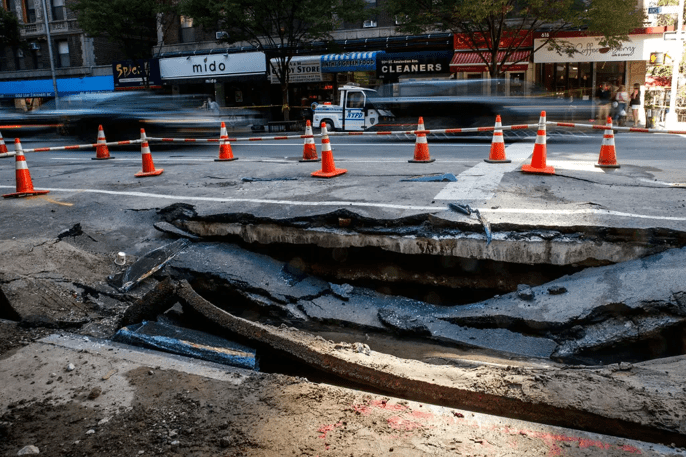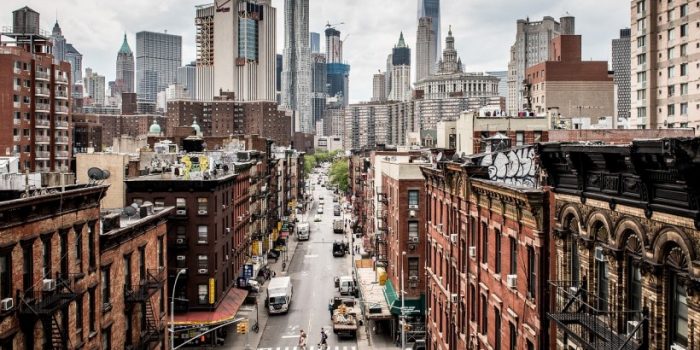Recent geological research has revealed a concerning phenomenon: the weight of New York City’s towering skyscrapers is causing the city to gradually sink into the surrounding bodies of water.
The extensive network of over 1 million buildings, weighing approximately 1.7 trillion pounds, is responsible for the descent of the Big Apple, with some areas sinking at a faster rate of 1 to 2 millimeters per year. This gradual subsidence poses a significant risk to the city, making it highly vulnerable to natural disasters.
Lead researcher and geologist Tom Parsons of the United States Geological Survey warns that Lower Manhattan, Brooklyn, and Queens are particularly at risk, urging for immediate attention and action to mitigate the potential hazards.

NYC faces substantial challenges from flood hazards, with the threat of sea level rise along the Atlantic coast of North America being three to four times higher than the global average, as highlighted in the recent report by Parsons and his team. As a result, the densely populated city, home to 8.4 million people, is exposed to varying inundation risks. Tragically, the effects of these hazards have already been witnessed in the past.
Parsons points out two recent hurricanes, Sandy in 2012 and Ida in 2021, caused casualties and extensive damage in New York City. Hurricane Sandy forced seawater into the city, while Hurricane Ida overwhelmed drainage systems due to heavy runoff within the predominantly paved urban environment.
The sinking of New York City is not an isolated occurrence but rather part of a more significant problem observed in many coastal cities worldwide. In addition, sinkholes in city streets once thought to be beyond the bounds of New York, are becoming increasingly common. City officials attribute this sinkhole surge to the ongoing climate crisis, exacerbating subsidence.

Parsons expresses concern not only for the current effects of severe storms but also for the future integrity of the city’s buildings. The combination of tectonic and anthropogenic subsidence, rising sea levels, and the projected increase in hurricane intensity pose an accelerating problem for coastal and riverfront areas. In addition, the repeated exposure of building foundations to salt water can lead to corrosion of reinforcing steel and chemical weakening of concrete, resulting in structural vulnerabilities.
Moreover, the likelihood of severe storms has increased over the years due to the reduction of the natural wind shear barrier along the US East Coast caused by greenhouse gas emissions. Parsons warns that this trend will lead to more frequent high-intensity hurricane events in the coming decades.

Alarmingly, despite the lessons learned from Hurricane Sandy, many new real estate developments in New York City do not sufficiently address the seriousness of the sinking issue. Parsons reveals that New York City ranks third in the world regarding future exposed assets to coastal flooding, and a staggering 90% of the 67,400 structures in the expanded post-Hurricane Sandy flood-risk areas have not been built to floodplain standards.
This indicates the urgent need for proactive measures to mitigate the growing inundation hazard and serves as a reminder that New York’s challenges are shared by coastal cities worldwide.


